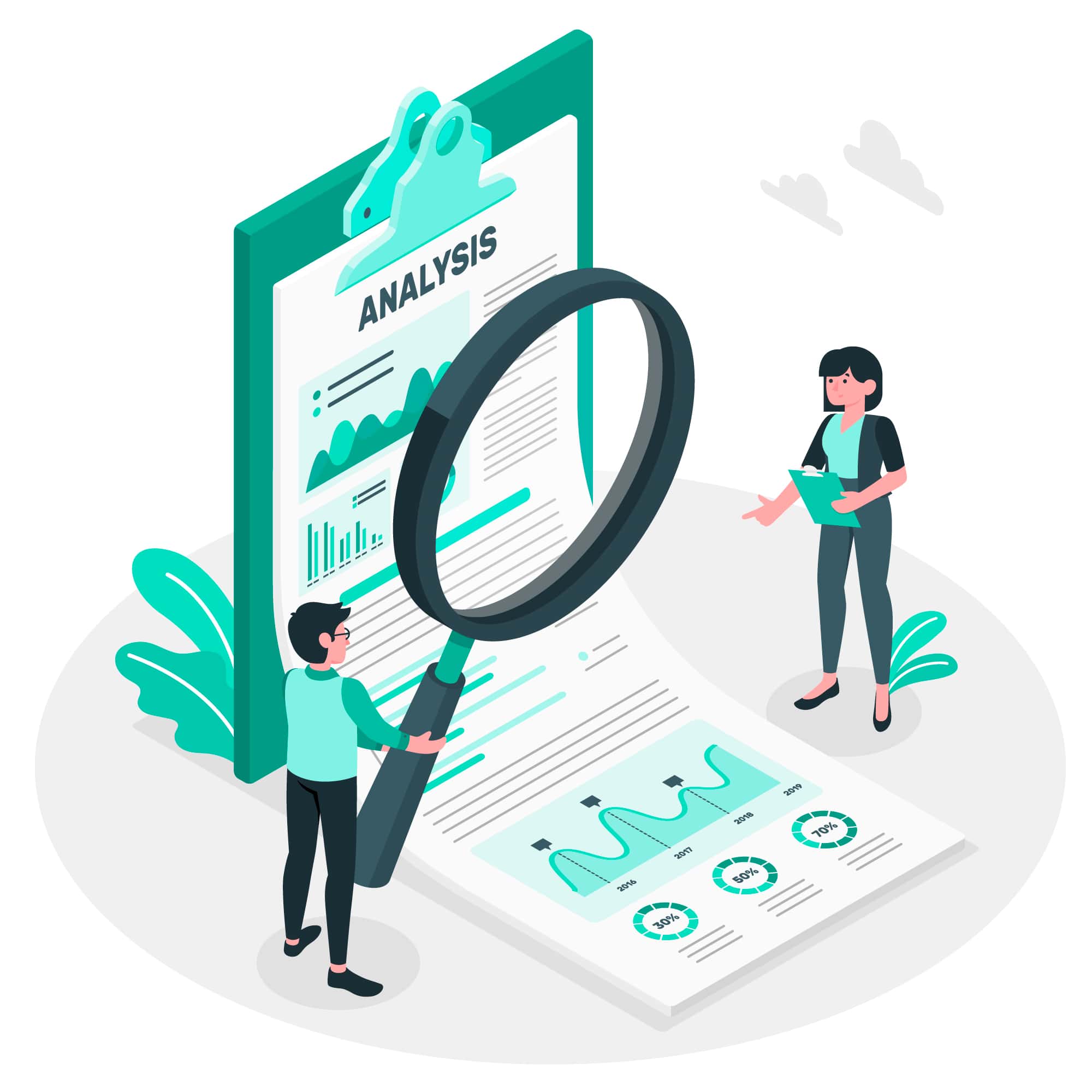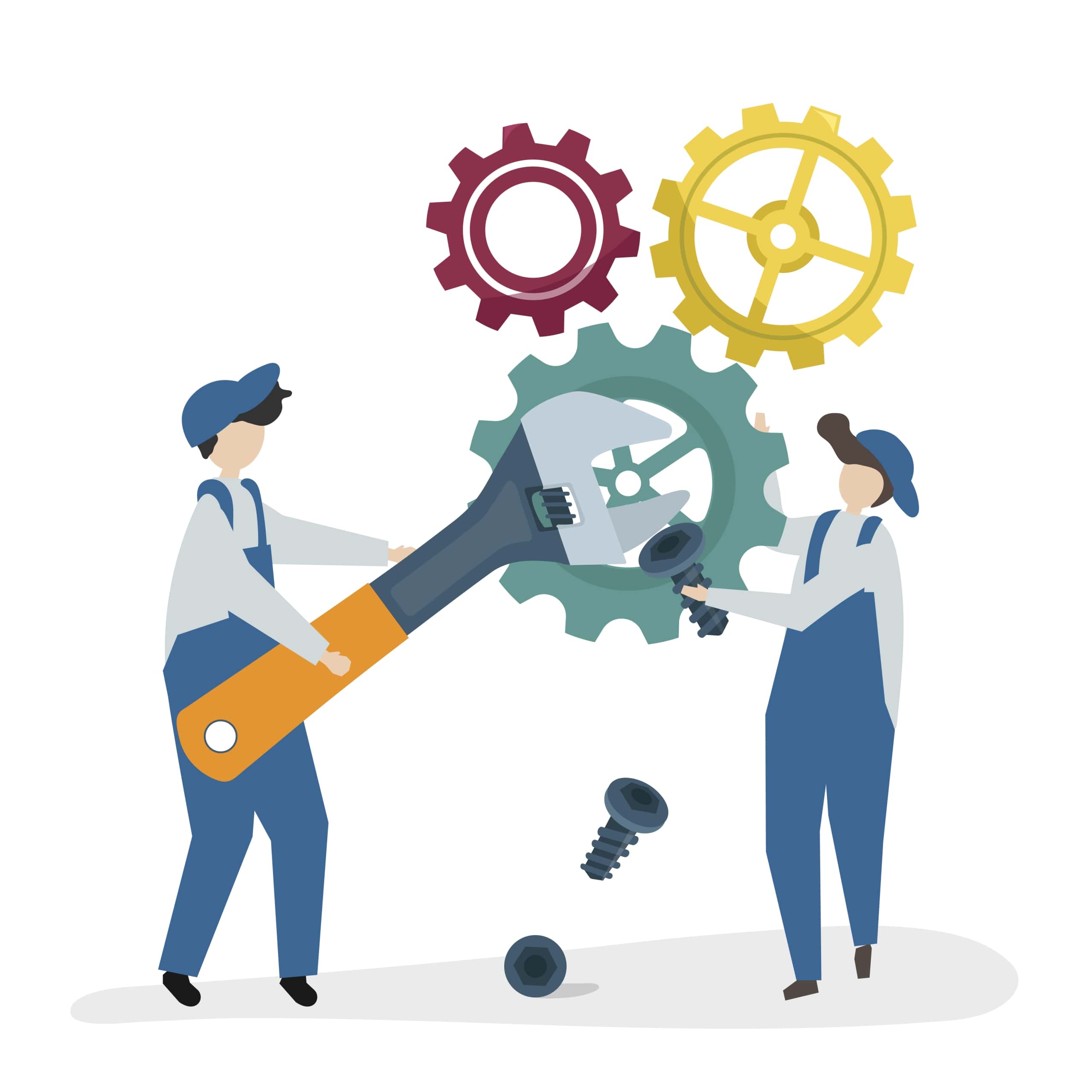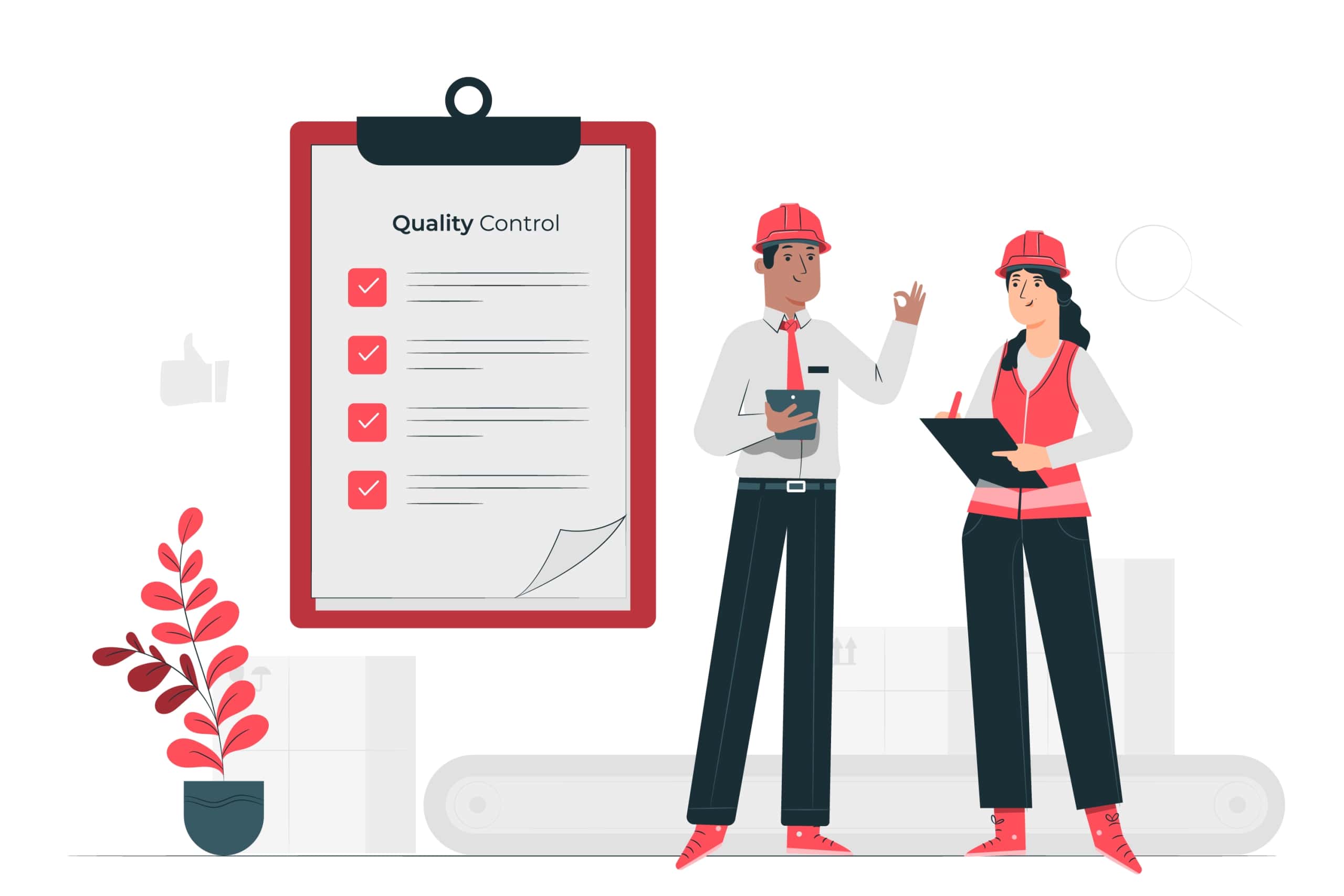Real-Time Monitoring and Analytics
Real-time monitoring and analytics revolutionize wet wipes production by providing unparalleled insight and control over manufacturing operations. Wet wipes manufacturers may use IoT sensors and AI-driven analytics to monitor and analyze different parts of the production line continuously.
Continuous Data Collection
This refers to the ongoing process of gathering and recording information without interruption or gaps. The production facility is equipped with strategically positioned IoT sensors that gather data on crucial aspects including temperature, humidity, pressure, machine performance, and material flow. The sensors continuously communicate data to a central system, offering a comprehensive and real-time overview of the whole production process.
Instantaneous Perceptions
The gathered data is analyzed with sophisticated AI algorithms, capable of swiftly detecting patterns, abnormalities, and trends. By conducting this prompt examination, wet wipes manufacturers can acquire vital insights about the production process in real time. For instance, in the event of a rapid increase in temperature or a decrease in machine efficiency, the system can promptly notify workers, enabling them to take immediate corrective measures.
Improved Cognitive Process
The use of real-time analytics significantly improves decision-making. Plant managers and operators may now access real-time data to monitor the status of the production line, eliminating the need for periodic reports or manual inspections. Alternatively, individuals have the ability to make well-informed choices by relying on real-time facts. This level of agility enables fast issue resolution, optimization of operations, and prevention of possible interruptions before they grow into more significant challenges.
Predictive Analytics
In addition to providing immediate insights, predictive analytics driven by AI utilize past data and machine learning models to anticipate future events. For example, the system can forecast the occurrence of a machine failure by analyzing its present performance patterns and past breakdown tendencies. By utilizing this predictive capability, maintenance may be scheduled at the most advantageous moments, resulting in decreased downtime and guaranteeing continued output.
Quality Control
Real-time monitoring is essential for quality control. Sensors can identify variations in the manufacturing process that could potentially impact the overall quality of the end product. For instance, if the moisture content in wet wipes exceeds or falls below the ideal range, the system can notify operators to make necessary adjustments to the settings. This guarantees that every batch of wet wipes adheres to rigorous quality standards, resulting in a reduction of waste and an enhancement of customer satisfaction.
Management of Energy and Resources
Real-time data is also beneficial for efficiently managing energy usage and resource utilization. Through the real-time monitoring of energy consumption, wet wipes manufacturers may detect inefficiencies and implement strategies to optimize energy conservation. This not only decreases operational expenses but also aids in achieving sustainability objectives by limiting the ecological consequences of production.
The implementation of real-time monitoring and analytics is transforming the manufacture of wet wipes by offering an unprecedented level of visibility and control. By consistently gathering data, promptly analyzing it, utilizing predictive analytics, and making better-informed decisions, wet wipes manufacturers may maximize their operations, boost product quality, and realize substantial cost reductions. With the ongoing adoption of these technologies, the future of wet wipes production appears to be characterized by enhanced efficiency and innovation.
Predictive Maintenance
Predictive maintenance is a notable progress in the manufacturing industry, namely for the production of wet wipes, where the efficiency and dependability of wet wipes machines are crucial. Through the utilization of artificial intelligence (AI) and the Internet of Things (IoT), predictive maintenance tactics empower manufacturers to forecast equipment malfunctions and arrange appropriate interventions, therefore improving productivity and diminishing expenses.
Data Collection and Monitoring
The process of predictive maintenance commences by consistently gathering data from Internet of Things (IoT) sensors that are integrated into machinery. These sensors oversee a range of factors including vibration, temperature, pressure, and operational speed. The data is delivered instantaneously to a centralized analytics system.
Analysis Powered by Artificial Intelligence.
AI algorithms are utilized to process enormous quantities of collected data. These algorithms are specifically developed to identify patterns and identify abnormalities that may suggest possible problems. For instance, a progressive escalation in vibration levels may indicate that a component is deteriorating and is likely to fail shortly.
AI models undergo training utilizing previous data, which enables them to enhance their accuracy as time progresses. Through the examination of patterns and the juxtaposition of present data with past performance standards, artificial intelligence can forecast the occurrence of machine failure or the need for maintenance.
Timely Identification of Problems
An important advantage of predictive maintenance is the timely identification of possible issues. Predictive maintenance proactively detects problems at their early stages instead of waiting for equipment to malfunction. The purpose of this early warning system is to enable maintenance teams to promptly resolve minor issues before they escalate into significant failures that have the potential to completely halt production.
Planned Interventions
Predictive maintenance involves scheduling interventions based on the real-time status of equipment, rather than using arbitrary time intervals. This strategy guarantees that maintenance is carried out solely when it is required, hence improving resource utilization and eliminating avoidable periods of inactivity. Maintenance teams can strategically organize their actions based on production schedules, so minimizing interruptions and enhancing overall operational effectiveness.
Prolonging the Duration of Equipment Usage
Predictive maintenance enhances the longevity of machinery by assuring its appropriate upkeep. Consistent, data-informed maintenance practices help prevent excessive deterioration, hence decreasing the chances of catastrophic malfunctions. This not only reduces repair expenses but also postpones the necessity for costly replacements.
Advantages of Predictive Maintenance
- Reduced Downtime: Predictive maintenance greatly decreases unexpected downtime by proactively resolving possible faults before they lead to failures.
- Cost Savings: Cost savings can be achieved by early detection and prompt interventions, which prevent expensive repairs and prolong the lifespan of machinery, leading to significant financial benefits.
- Enhanced Dependability: Predictive maintenance improves the reliability of manufacturing machinery, guaranteeing consistent and uninterrupted functioning.
- Efficient Resource Utilization: Maintenance tasks are executed solely when required, hence optimizing the allocation of maintenance resources and staff.
- Improved Safety: Predictive maintenance enhances safety by mitigating unforeseen mechanical malfunctions, hence fostering a more secure working environment.
Predictive maintenance is an effective tool for wet wipes manufacturers, allowing them to uphold optimal levels of operational efficiency and dependability. By employing IoT sensors and AI-powered analytics, wet wipes manufacturers can predict and avert equipment malfunctions, optimize maintenance timetables, and prolong the operational lifespan of their machines. Predictive maintenance improves productivity, decreases costs, and promotes sustainable and efficient manufacturing processes. Real-time monitoring and analytics revolutionize wet wipes production by providing unparalleled insight and control over manufacturing operations. Wet wipes manufacturers may use IoT sensors and AI-driven analytics to consistently monitor and analyze different parts of the production line.
Automated Quality Control
Automated quality control (AQC) is transforming the wet wipes production business by utilizing cutting-edge technology like artificial intelligence (AI) and the Internet of Things (IoT) to guarantee that goods constantly adhere to rigorous quality criteria. This methodology improves precision, effectiveness, and dependability, diminishing human fallibility and empowering manufacturers to provide exceptional products to consumers.
Live Inspection
Traditional quality control generally involves manual inspections, which are both time-consuming and susceptible to human error. Automated quality control systems employ advanced high-resolution cameras and sensors to perform real-time inspections of wet wipes as they progress along the production line. This quality control system can capture extremely small details at fast speeds, guaranteeing that every wipe is carefully analyzed.
Defect Detection Powered by Artificial Intelligence
AI algorithms form the fundamental basis of automated quality control systems. These algorithms are trained on extensive datasets of photos, enabling them to identify different imperfections such as tears, wrinkles, uneven moisture distribution, and contamination. The AI system can promptly detect any discrepancies and mark faulty products by comparing live photos with the desired product specifications.
If a batch of wet wipes exhibits an irregular texture or an inaccurate fold, the AI system will identify these problems and activate a notification. This quick feedback loop enables operators to promptly resolve issues, hence limiting the quantity of faulty products that are released into the market.
Consistency and Precision
An important benefit of automated quality control is its capacity to uphold uniformity and precision. AI systems offer objective and consistent ratings, unlike human inspectors who may overlook tiny problems owing to weariness or subjective opinion. Ensuring consistency is essential in order to uphold high-quality standards when dealing with huge production quantities.
Automated Sorting and Rejection
Automated quality control systems are frequently used to sort and reject procedures. Upon detection of a faulty product, the system can autonomously eliminate it from the assembly line. This guarantees that only items that fulfill the established quality criteria are allowed to advance to the packaging and distribution stages. Automated sorting minimizes the requirement for human involvement, simplifying the production process and improving overall effectiveness.
Analytical Findings
Automated quality control systems produce extensive data that can be examined to obtain valuable insights into the manufacturing process. Wet wipes manufacturers can monitor and analyze the frequency of defects, pinpoint recurring problems, and ascertain the underlying reasons behind quality concerns. By utilizing a data-driven strategy, wet wipes manufacturers can continuously optimize their processes and better the quality of their products over time.
Advantages of Automated Quality Control
- Improved Precision: Automated systems accurately identify flaws, guaranteeing that only products that satisfy quality standards are sent to consumers.
- Enhanced Efficiency: Automated inspections exhibit greater speed compared to manual inspections, enabling larger production rates while maintaining quality standards.
- Consistency: AI systems offer reliable assessments, removing the inconsistency linked to human inspectors.
- Cost Savings: Automated quality control results in substantial cost savings by reducing the quantity of defective items and minimizing the need for rework.
- Data-Driven Improvement: Data-driven improvement refers to the use of data provided by automated systems to gain insights and make ongoing enhancements to processes.
Automated quality control is revolutionizing the production of wet wipes by guaranteeing that goods adhere to rigorous quality standards with enhanced precision and efficiency. Wet wipes manufacturers can get regular and dependable inspections, diminish defects and enhance their production processes by utilizing AI and IoT technology. As the industry increasingly embraces these innovative technologies, the quality and dependability of wet wipes are poised to achieve unprecedented levels, yielding advantages for both wet wipes manufacturers and consumers.
Efficiency and Sustainability
Efficiency and sustainability are essential foundations in contemporary wet wipes manufacturing, promoting both financial savings and environmental accountability. The amalgamation of artificial intelligence (AI) and Internet of Things (IoT) technologies is greatly augmenting these facets, empowering manufacturers to optimize the use of resources, curtail wastage, and mitigate their environmental impact.
Efficient Allocation of Resources
Artificial intelligence-powered analytics empower wet wipes manufacturers to maximize the utilization of raw materials and resources. Through the analysis of production data, artificial intelligence algorithms can detect patterns and provide recommendations for optimizing efficiency. For instance, they can recommend the ideal quantity of liquid to be used on each wipe, guaranteeing uniformity while reducing unnecessary usage. By exercising meticulous control over resources, the amount of unnecessary utilization is minimized, resulting in substantial cost savings and a more environmentally friendly production process.
Minimized Waste
Internet of Things (IoT) sensors are crucial in overseeing different phases of the manufacturing process to guarantee a minimized amount of waste. Sensors have the ability to identify and rectify abnormalities immediately, such as components that are not properly aligned or packages that are not sealed correctly. These deviations could otherwise lead to the rejection of the product. By identifying these problems at an early stage, producers can decrease the quantity of faulty items and the resulting waste.
In addition, predictive analytics enabled by artificial intelligence can provide more precise forecasts of demand, allowing for better synchronization of production plans with market requirements. This alignment ensures that there is no overproduction, which can result in an accumulation of surplus inventory and unnecessary waste. Wet wipes manufacturers can substantially decrease waste by exclusively producing the necessary amount.
Optimizing the Use of Energy
Energy usage is a significant consideration in the production of wet wipes. Internet of Things (IoT) sensors can monitor energy consumption across the entire manufacturing line, offering comprehensive analysis of energy usage patterns and identifying potential areas of inefficiency. Artificial intelligence systems examine this data to discover any inefficiencies and provide recommendations for optimizations.
By closely monitoring the energy usage of various devices, artificial intelligence (AI) can suggest maintenance timetables or operational modifications that can enhance energy efficiency. In addition, smart grids powered by the Internet of Things (IoT) can dynamically modify energy use in response to real-time demand, thereby decreasing both overall energy usage and expenditures.
Sustainable Materials
Artificial intelligence (AI) and Internet of Things (IoT) technologies also enable the utilization of eco-friendly materials. Wet wieps manufacturers can have exact control over production processes, enabling them to experiment with and use biodegradable or recyclable materials while maintaining high-quality standards. For example, AI can enhance the development and usage of biodegradable fibers in wet wipes, guaranteeing their performance matches that of conventional materials while also being more ecologically sustainable.
Monitoring the Environment
IoT sensors can continuously monitor environmental factors, including air quality, water consumption, and chemical discharges, in real time. This monitoring guarantees that the production process complies with environmental norms and requirements. If any parameter surpasses acceptable thresholds, the system can activate alarms and initiate automatic modifications to restore compliance, thereby mitigating the environmental consequences of the wet wipes manufacturing process.
Advantages of Improved Efficiency and Sustainability
- Cost Savings: Efficient utilization of resources and minimized wastage result in substantial cost reductions in both raw materials and energy.
- Environmental Responsibility: Environmental responsibility entails implementing sustainable methods that effectively mitigate the environmental impact, so enabling wet wipes manufacturers to comply with legal requirements and enhance their market image.
- Enhanced Product Quality: Streamlined procedures provide a uniform product quality while integrating eco-friendly resources.
- Competitive Advantage: Competitive advantage can be achieved by adopting both efficiency and sustainability practices, which can set a brand apart in a competitive market and attract environmentally conscious consumers.
- Regulatory Compliance: Real-time monitoring guarantees compliance with environmental rules, preventing penalties and improving operational dependability.
The amalgamation of artificial intelligence (AI) and Internet of Things (IoT) technologies is transforming the process of manufacturing wet wipes by improving productivity and environmental friendliness. By efficiently utilizing resources, eliminating waste, enhancing energy efficiency, and embracing sustainable materials, wet wipes manufacturers can attain substantial cost savings while limiting their impact on the environment. As the industry increasingly adopts these advancements, the future of wet wipes manufacturing holds the potential for economic and environmental sustainability, satisfying the rising need for top-notch, environmentally friendly goods.
Enhanced Supply Chain Management
Optimizing supply chain management is essential for ensuring the efficiency and competitiveness of wet wipes manufacturers. Integrating AI and IoT technology into supply chain operations offers immediate visibility, improved precision, lowers expenses, and improves overall flexibility. This change guarantees the timely delivery of items, optimizes inventory levels, and streamlines production operations.
Real-time Inventory Management
IoT sensors and RFID tags are employed for real-time monitoring of the movement of wet wipes raw materials and completed products. This real-time monitoring system ensures precise inventory levels, effectively preventing both excessive stock and stock shortages. Artificial intelligence systems examine this data to forecast future inventory requirements using historical patterns and up-to-date sales data.
For instance, when the system detects a sudden surge in demand for a specific variant of wet wipes, it can autonomously modify inventory levels and initiate the replenishment of supplies to fulfill the expected demand. By making adjustments in real-time, it is possible to maintain inventory levels at their most efficient, minimizing storage expenses, and guaranteeing uninterrupted output.
Forecasting of Demand
AI-powered demand forecasting utilizes advanced machine learning algorithms to accurately predict future demand. These algorithms examine past sales data, market patterns, seasonal fluctuations, and external factors like economic circumstances and consumer conduct. Wet wipes manufacturers may enhance their production schedules by utilizing accurate demand projections, enabling them to synchronize their operations with market requirements.
Precise demand forecasting aids in avoiding surplus output and mitigating the risk of excessive inventory, hence preventing resource wastage and cost escalation. Additionally, it guarantees that manufacturers can swiftly fulfill customer demand, hence improving customer happiness and loyalty.
Collaboration with Suppliers
Optimizing supply chain management requires a high level of cooperation and coordination with suppliers. IoT-enabled solutions enable wet wipes manufacturers and suppliers to communicate and share data in real-time. This partnership guarantees that suppliers are fully informed about the wet wipes manufacturer’s requirements and can make necessary adjustments to their production schedules.
For example, if a wet wipes manufacturer foresees an increase in demand for a particular category of wet wipes, they might proactively convey this information to their suppliers. By adopting a proactive strategy, suppliers can effectively anticipate and arrange for the timely delivery of essential raw materials, thus avoiding any disruptions or delays in the manufacturing process.
Optimizing Transportation and Logistics
Artificial intelligence (AI) and Internet of Things (IoT) technologies are also used to enhance and streamline transportation and logistics processes. Internet of Things (IoT) sensors monitor the real-time location and status of shipments, offering complete visibility into the whole logistics process. Artificial intelligence systems examine this data to improve delivery routes, hence decreasing transportation expenses and enhancing delivery speed.
AI can determine the most optimal routes by analyzing traffic patterns, weather conditions, and delivery schedules. This optimization minimizes gasoline use and emissions, thereby supporting environmental objectives while guaranteeing punctual product delivery.
Hazard Mitigation
Supply chain disruptions can have a substantial influence on the timing of production and delivery. Artificial intelligence (AI) and Internet of Things (IoT) technologies improve risk management by offering timely alerts about potential disruptions. For example, Internet of Things (IoT) sensors can identify problems like as delays in the delivery of wet wipes raw materials, malfunctions in equipment, or unfavorable weather conditions.
Artificial intelligence systems examine this data to evaluate the consequences of possible disruptions and suggest alternative plans. Wet wipes manufacturers might adopt proactive strategies to reduce risks, such as seeking supplies from different vendors or modifying manufacturing schedules. By adopting a proactive approach, the negative effects of disruptions are minimized and the supply chain is guaranteed to remain uninterrupted.
Advantages of Improved Supply Chain Management
- Enhanced Efficiency: The utilization of real-time tracking and precise demand forecasting results in the streamlining of operations, leading to waste reduction and the optimization of resource utilization.
- Cost Savings: Cost savings are achieved by the optimization of inventory levels, the reduction of transportation costs, and the implementation of effective logistics.
- Better Customer Satisfaction: Enhanced client satisfaction and loyalty are achieved through the timely delivery of high-quality items.
- Enhanced Agility: The utilization of real-time data and insights generated by artificial intelligence empowers manufacturers to promptly adapt to market fluctuations and disturbances.
- Sustainability: Environmental sustainability is achieved by the optimization of transportation routes and the reduction of waste.
The wet wipes production business is transforming with the implementation of AI and IoT technologies, which are enhancing supply chain management. These technologies guarantee that wet wipes manufacturers can provide high-quality products economically and sustainably by offering real-time visibility, precise demand forecasts, improved logistics, and effective risk management. As the sector increasingly adopts these developments, the advantages of enhanced supply chain management will result in increased competitiveness and consumer satisfaction.






